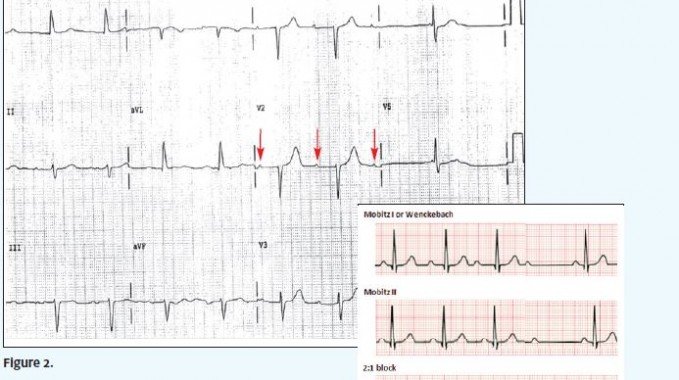Published on

Differential Diagnosis
- Sinus tachycardia
- AV block second degree ─ Mobitz I (Wenkebach)
- Multifocal atrial tachycardia
- Atrial fibrillation
- Third-degree AV block
Diagnosis
This patient has a Mobitz I (Wenkebach) second-degree AV block, revealed in the ECG by progressive lengthening of the PR interval until there is a nonconducted P wave. The first two arrows below show the PR interval lengthening and then the last arrows a nonconducted P wave.
Learnings
- There is a progressive lengthening of the PR interval, until there is a nonconducted P wave (see arrows above)
- The P-P interval is typically constant
- Medical conditions which may cause Wenkebach include myocardial infarction, myocarditis, electrolyte abnormalities, and postcardiac surgery
- Medications include beta-blockers, calcium channel blockers, and digoxin
Pearls for initial management and considerations for transfer:
- Compare to previous ECG, if available
- Patients without identifiable cause after history do not require further testing
- Patients who are asymptomatic without an identifiable cause do not require treatment
- Patients who are symptomatic with tachycardia, hypotension, chest pain, shortness of breath, or altered consciousness should be transferred
- Distinguish from Mobitz II second-degree AV block and third-degree AV block, which are not benign rhythms
An 82-Year-Old Man with Palpitations
1 2
